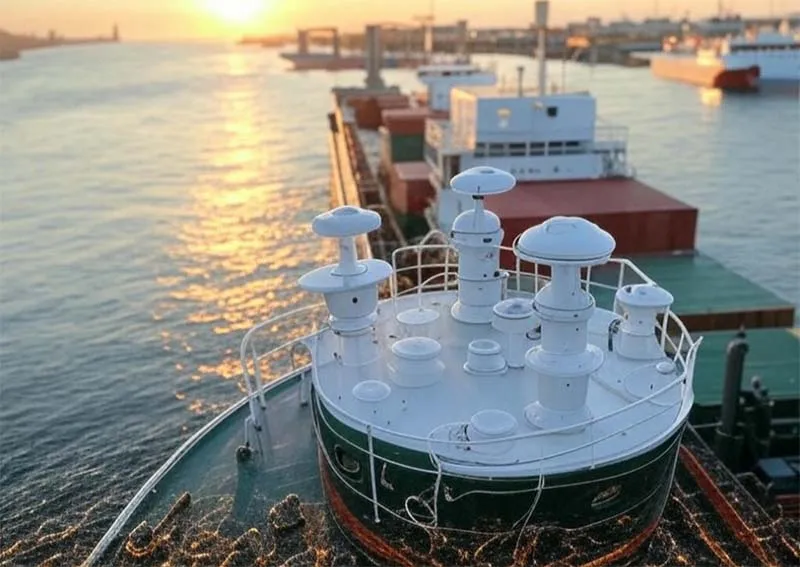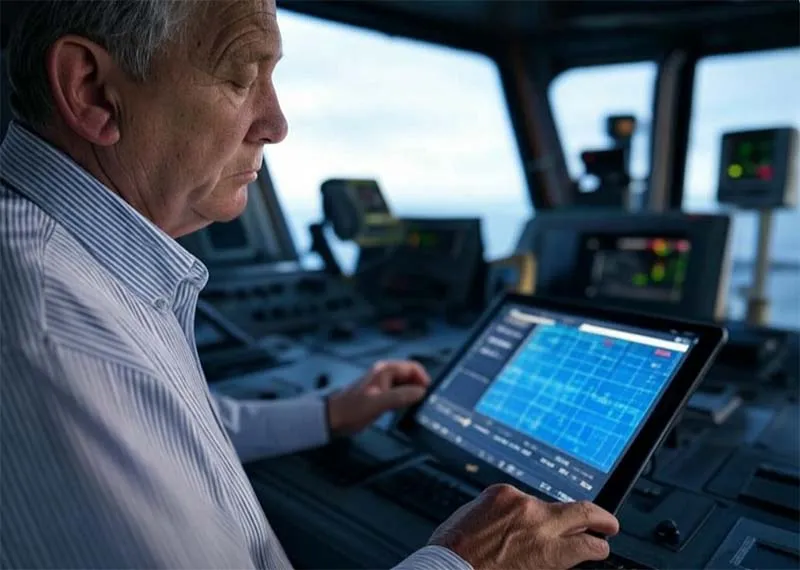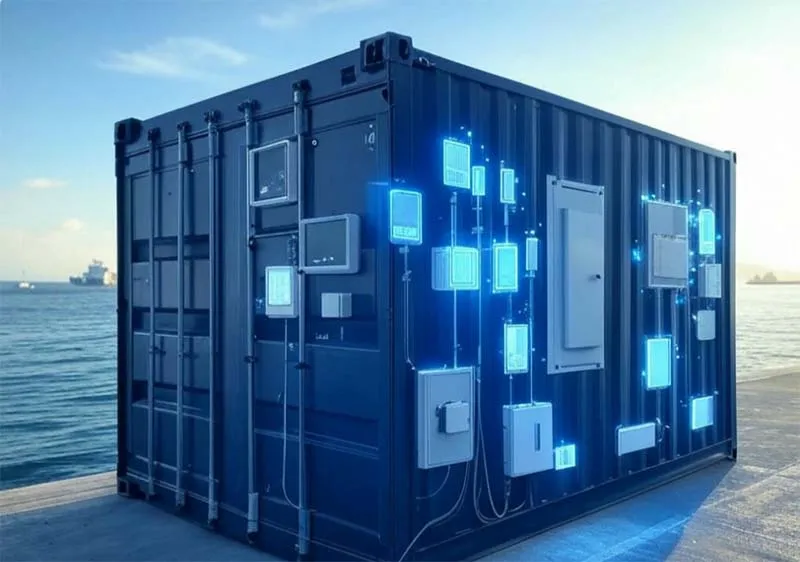As ships sail through the vast oceans and port cranes operate day and night, a quiet revolution in intelligent shipping, driven by IoT technology, is changing the landscape of the global maritime economy.
From precise ship navigation to efficient port scheduling and seamless cargo tracking, the Internet of Things (IoT) is reshaping the future of the shipping industry with its omnipresent connectivity.
In early 2025, the latest reports in China’s IoT sector show that this technology has deeply integrated into intelligent shipping systems, significantly enhancing both efficiency and safety, and injecting strong momentum into the digital transformation of the marine economy. This is both a symphony of technology and industry and a new starting point for humanity’s conquest of the oceans.

IoT Technology: The “Nervous System” of Intelligent Shipping
In the grand blueprint of intelligent shipping, IoT technology is undoubtedly the core “nervous system.” Through the synergistic effect of sensors, 5G networks, and data analytics, ships and ports are transitioning from traditional mechanical operations to highly intelligent management. The starting point of this transformation lies in the deep integration of technology.
Take ship management as an example: modern cargo ships are no longer just transportation tools; they are “mobile data centers” equipped with hundreds of sensors. These sensors monitor engine status, fuel consumption, weather conditions, and even the structural integrity of the ship. Data is transmitted via 5G networks to the onshore control center in real-time.
A 2025 technological breakthrough has made remote monitoring no longer a science fiction scenario but a daily reality. For example, a container ship sailing from Shanghai to Rotterdam can automatically adjust its route when encountering a storm, avoiding dangerous areas. All of this is remotely commanded by an onshore intelligent system.
Meanwhile, the widespread use of autonomous navigation systems has significantly reduced the risk of human error. Data shows that in 2024, shipping accidents caused by human operational errors decreased by 15%, thanks to IoT technology.
Port scheduling is another major area of benefit. At global hub ports like Tianjin Port, IoT technology optimizes berth allocation and loading/unloading processes by tracking ship locations and cargo status in real-time. Tasks that used to require hours of manual coordination can now be completed in just minutes through algorithmic calculations.
Statistics from early 2025 show that Tianjin Port’s cargo turnover efficiency has increased by 20%, and waiting times have been reduced by a third.
Cargo tracking has also undergone a revolutionary change. Each item of cargo is embedded with an RFID tag connected to the IoT network, allowing cargo owners to track every step of their goods’ journey from departure to arrival via mobile phones. This transparency not only boosts customer satisfaction but also brings unprecedented precision to supply chain management.
The dual improvement in efficiency and safety has solidified IoT’s foundational role in intelligent shipping. This is not just a technological upgrade but a disruptive reconfiguration of the traditional shipping model. As one industry expert put it, “IoT transforms ships and ports from isolated entities into an organically coordinated whole.”

New Developments in China’s Intelligent Shipping by 2025
As a global maritime powerhouse, China’s steps in intelligent shipping are especially noteworthy. Early reports in 2025 indicate that intelligent shipping has become an important pillar of the national maritime strategy, with the widespread application of IoT technology being the key driving force behind this achievement. From technological innovation to policy support, China is writing a new chapter in intelligent shipping with a grand national vision.
On the technological front, China’s leading position in 5G networks provides a solid foundation for intelligent shipping. By early 2025, all major coastal ports in China had achieved full 5G coverage, with data transmission speeds more than 10 times faster than in the 4G era. This provides technical assurance for remote ship monitoring and real-time port scheduling.
For example, Qingdao Port was the first to launch an “unmanned dock” project based on 5G and IoT. The loading, unloading, transportation, and stacking of containers are all automatically handled by intelligent systems. According to port authorities, this project has reduced labor costs by 30% and increased operational efficiency by 25%.
At the same time, China’s independently developed BeiDou Navigation System, combined with IoT, further enhances the precision of ship positioning, giving Chinese shipping companies a competitive edge in the international market.
Policy support is also crucial. At the end of 2024, the Chinese government issued the “Action Plan for the Digital Transformation of the Marine Economy,” which sets a target of achieving 80% coverage of intelligent shipping technologies by 2030.
To this end, the government has invested hundreds of billions of yuan in IoT infrastructure construction and subsidies for related enterprises’ R&D. Data from early 2025 show that more than 50 shipping technology companies have accelerated their efforts under this policy incentive, including global players such as COSCO Shipping Group, whose latest generation of intelligent cargo ships has achieved full-process automated management.
Specific cases further illustrate this trend. In the Yangtze River Golden Waterway, a smart fleet supported by IoT technology began operating in January 2025. The fleet monitors hydrological conditions and ship status in real-time, shortening transport time by 10% and significantly reducing carbon emissions.
The success of this project is seen as a milestone in China’s inland waterway shipping moving toward intelligence. Industry experts predict that similar projects will be rolled out in the Pearl River, Grand Canal, and other water systems within the next three years.
China’s intelligent shipping boom not only demonstrates technological strength but also highlights its ambitions in the global maritime economy. Every innovation on this land in 2025 sets new benchmarks for the global shipping industry.

The Digital Transformation of the Marine Economy and Future Outlook
The rise of intelligent shipping is more than just a breakthrough in technology; it is also a catalyst for the digital transformation of the marine economy. The widespread application of IoT technology is reshaping the traditional shipping industry chain into a highly interconnected digital ecosystem, and its impact is spreading globally.
First, digital transformation means the full release of efficiency. In the past, inefficient elements of the shipping industry—such as ship waiting times, cargo congestion, and information asymmetry—have long constrained industry development. Now, IoT is solving these pain points one by one through data-driven decision-making.
The International Maritime Organization predicts that by 2030, global shipping efficiency could increase by 30% due to intelligent technologies, saving over $100 billion annually in operating costs. This not only benefits shipping companies but also brings lower logistics costs to traders and consumers.
Second, intelligent shipping is attracting significant investment. In early 2025, global venture capital investment in the shipping IoT sector grew by 40%, with the Chinese market accounting for nearly one-third of the share. From sensor manufacturers to 5G network providers to smart ship design companies, the entire industry chain is thriving in this boom.
Shenzhen, known as a city of technology, has become a hub for IoT startups in the shipping sector, with over 100 new related companies established in 2024 alone. The influx of capital is accelerating technological iterations and injecting sustained innovation into the industry.

Looking ahead, the prospects for intelligent shipping are exciting. As artificial intelligence and IoT further integrate, the next generation of ships may achieve fully unmanned operations, while ports may evolve into “digital brains,” autonomously managing thousands of transportation tasks using big data and cloud computing.
Experts predict that by 2035, 80% of global ocean-going cargo ships will have intelligent navigation capabilities, and port throughput will increase by over 50%. At the same time, green shipping will become mainstream, and the role of IoT in energy conservation and emissions reduction will become more prominent, contributing to climate change mitigation.
However, this process is not without challenges. Data security, network stability, and the unification of international standards are urgent issues in the development of intelligent shipping. But as history has repeatedly shown, technological progress will ultimately overcome these obstacles, leading humanity to new heights.
A new chapter in intelligent shipping has begun, and IoT technology is the helmsman of this giant ship. From the precision of ship management to the intelligence of port scheduling and the digital transformation of the marine economy, this revolution not only enhances efficiency and safety but also ignites limitless possibilities for the global shipping industry.
Looking back from the 2025 milestone, we see the magnificent convergence of technology and industry; looking ahead, we expect a vast digital ocean. Let us follow every breakthrough in this field closely, as it concerns not only the future of shipping but also the symbiotic future of humanity and the oceans.
